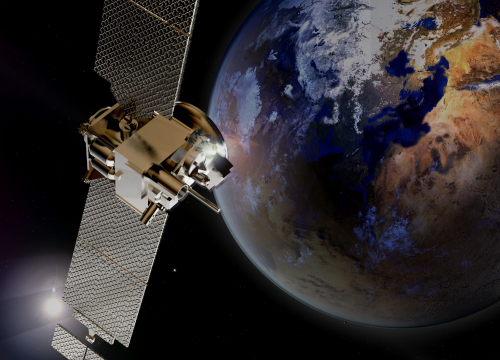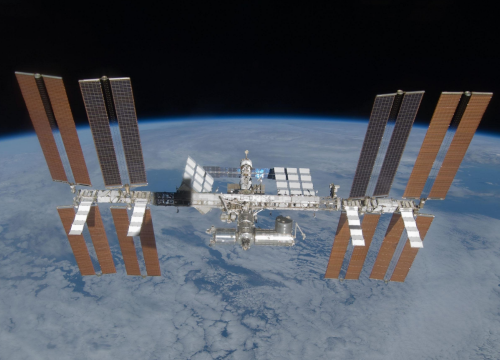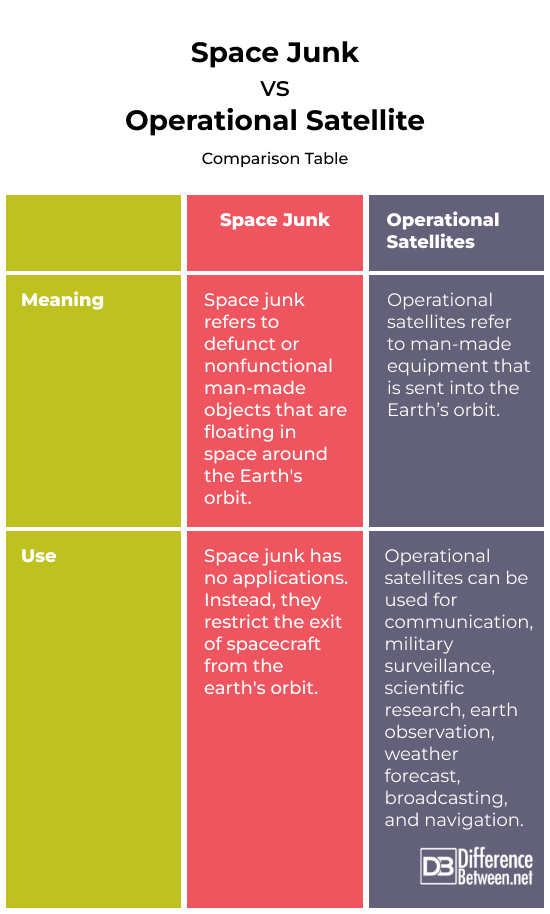Difference Between Space Junk and Operational Satellites
Scientific research and technology have been the primary fuel for the growth and development of the entire human civilization. However, some also believe modern-day technology isn’t without significant downsides. Looking at the world around us, it’s clear that both opinions hold some truth. And this is quite obvious when you look at the relationship between space junk and operational satellites.
Space junk and operational satellites are two artificial items that orbit Earth, one serving multiple purposes while the other is a menace. We’ve compiled this article to differentiate between both and identify their similarities.

What is Space Junk?
Space junk, or space debris, pollution, space waste, or cosmic debris, describes non-functional artificial objects floating around the Earth’s orbit. When many people look into the sky during the day and at night, it’s hard for them to picture the idea of cosmic waste just lying around. However, the truth is that there are tons of space waste comprising non-functional spacecraft, mission-related debris, numerous fragments from the breakup of rocket bodies and spacecraft, and non-functional satellites. Additionally, cosmic debris may include flecks of paint and unburned particles from rockets.
While it may seem like all this waste lies in space, space junk is a big problem. First, the tons of garbage floating around the orbit make it harder to send out spacecraft from the earth’s surface. There have been several cases where this debris damaged manned and uncrewed spacecraft. Furthermore, space junk has been increasing so much that there’s more debris than operational satellites. According to the US Space Surveillance Network, in 2022, 25,857 artificial objects are floating in the Earth’s orbit, with only 5,465 of them as operational satellites.

What are Operational Satellites?
A satellite is any artificial object or spacecraft placed in Earth’s orbit. For emphasis, an operational satellite is an object currently functional and serving a predefined purpose in space. However, other defunct satellites are floating in space, comprising spacecraft parts, unburned rocked parts, paint dots, etc. You’d do well to note there are thousands of operational satellites in the Earth’s orbit, each of which has its purpose. There are satellites for communication relay, weather forecasting, broadcasting, military surveillance and reconnaissance, navigation, earth observation, and scientific research.
Most active satellites contain an internal electricity generation system that powers all onboard equipment. This power generation system may comprise solar panels or radioisotope thermoelectric generators (RTGs). These artificial satellites also feature relay stations to communicate with equipment on the Earth’s surface.
If you ever get a chance to watch a satellite launch, you’ll no doubt be fascinated. The main equipment housing is launched from the surface to the earth’s surface to orbit by launch vehicles. When high enough to avoid reentry and orbital decay, launch vehicles detach. Satellites can then change or maintain orbital movement with propulsion.
Possible Similarities between Space Junk and Operational Satellites
While there are different types of space junk in Earth’s orbit, several were once operational satellites or generated from satellite launches. As a result, there are few similarities between both of them. First, space junk and operational satellites may appear similar, mainly when observed from a distance. These chunks of metals often move slowly around the earth’s orbit.
Furthermore, both space junk and operational satellites contribute to the space environment. Space junk pollutes Earth’s orbit, increasing the risk of collision during future spacecraft launches. On the other hand, operational satellites are for communication, navigation, and extensive research.
Differences between Space Junk and Operational Satellites
Here are some critical differences between space junk and operational satellites:
- Operational satellites are designed for a specific purpose, while space junk is no longer helpful.
- Operational satellites are designed with functional systems and equipment, while space junk is non-functional.
- Ground operators control operational satellites to ensure they maintain their orbits. However, space junk are uncontrolled orbital trajectories.
- Operational satellites are subject to regulation and guidelines for their launch, operation, and disposal, while space junk regulations concern reducing risks.
Space Junk vs. Operational Satellite: Comparison Table

Summary
Operational satellites are an example of the innovative use of technology. They boost communication capabilities and provide detailed information about the world around us. However, space junk is a term that describes the pile of scrap littering the earth’s orbit. While space waste had well-defined applications, they are now damaged, obsolete or non-functional. Go through this article to learn details about the similarities and differences of both terms.
FAQs
What are the two types of space junk?
The two main types of space junk are fragments from explosions and collisions, and defunct satellites and other spacecraft.
Can space junk damage satellites?
Yes, space junk can indeed damage satellites. Even small fragments of space debris traveling at high speeds can cause significant damage upon impact with operational satellites.
How do you identify space junk?
Space junk can be identified through various means, including tracking its orbit, analyzing its size, shape, and composition, and sometimes through direct observation using telescopes or radar systems.
What is space junk and what threat does it pose to manmade satellites?
Space junk refers to defunct human-made objects in space. These objects pose a threat to manmade satellites primarily due to the risk of collision. Even small debris traveling at high speeds can cause significant damage or destruction to operational satellites.
Are satellites considered space junk?
Only defunct and non-operational satellites are considered space junk.
How do satellites not hit space junk?
Satellites avoid collisions with space junk through a combination of proactive measures and orbital dynamics including debris tracking and monitoring, collision avoidance measures, deorbiting and space traffic management.
What are the 3 types of space debris?
There are 3 types of space debris including fragments from explosions and collisions, operational debris, defunct satellites.
Has someone ever reportedly been hit with space junk?
There haven’t been any reported incidents of individuals being directly hit by space junk. However, there have been cases where space debris has fallen back to Earth, posing a potential hazard to people and property on the ground.
How does NASA get rid of space junk?
NASA and other space agencies use various methods to mitigate and remove space junk, including deorbiting, active debris removal, and space traffic management.
- Difference Between Space Colonization and Space Habitats - May 13, 2024
- Difference Between Space Junk and Operational Satellites - May 9, 2024
- Difference Between Vector-Borne and Airborne Diseases - May 7, 2024
Search DifferenceBetween.net :
References :
[0]O’Callaghan, J. (n.d.). What is space junk and why is it a problem? Www.nhm.ac.uk. https://www.nhm.ac.uk/discover/what-is-space-junk-and-why-is-it-a-problem.html#:~:text=Space%20junk%2C%20or%20space%20debris
[1]O’Callaghan, J. (n.d.). What is space junk and why is it a problem? Www.nhm.ac.uk. https://www.nhm.ac.uk/discover/what-is-space-junk-and-why-is-it-a-problem.html#:~:text=Space%20junk%2C%20or%20space%20debris
[2]Satellites and space debris. New Scientist. Retrieved February 28, 2024, from https://www.newscientist.com/article/mg19526201-300-satellites-and-space-debris/
[3]How Satellites Work. (2000, May 19). HowStuffWorks. https://science.howstuffworks.com/satellite3.htm
[4]Image credit: https://www.canva.com/photos/MADQ5OZqpVU-satellite-flying-over-the-earth/
[5]Image credit: https://www.canva.com/photos/MAEFkTAvI0E-space-satellite/
